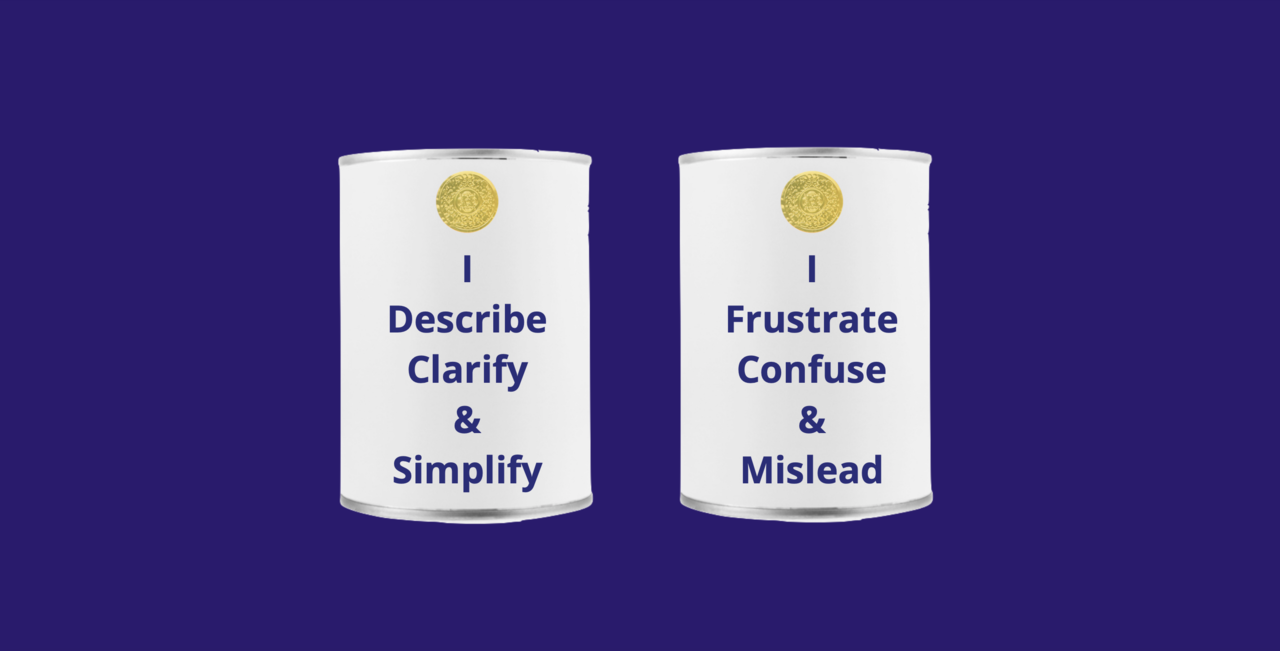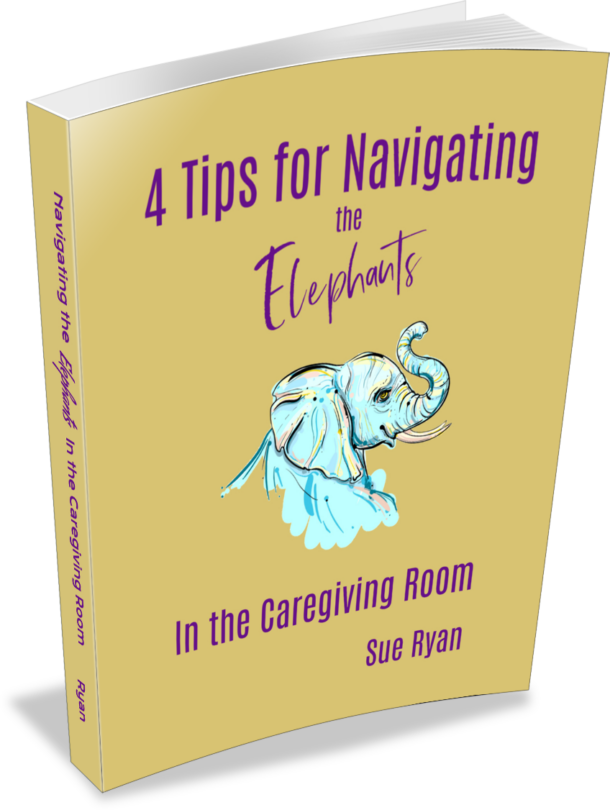You’ve heard them and we all use them. They’re labels.
Here are a few examples: “He’s a hypocrite”, “She’s a narcissist”, “I feel guilty”, “You’re a liberal”, “100% organic”, “He’s/She’s the GOAT”, “I’m not worthy”.
When used correctly, labels clarify and simplify. They’re important descriptive shortcuts that provide valuable insights. When used correctly, labels have the potential for people to make short-term decisions with positive long-term consequences.
When used incorrectly, they restrict our potential, can mislead, create bias, diminish curiosity, and incorrectly categorize. When used incorrectly, labels have the potential for people to make short-term decisions with negative long-term consequences.
Definitions
I’ve learned in my life that having my own clear understanding and definition of words I’m using, and clarifying definitions others use, helps me:
- Explain clearly
- Ask questions to eliminate misunderstandings and confusion
- Use the label correctly for the intended outcome.
Within and across dictionaries, the word ‘label’ has a variety of definitions, validating how important it is for us to make sure we know what someone else’s definition is when they use it. Here are just two of many.
One of the Cambridge Dictionary definitions of label:
A word or a phrase that is used to describe the characteristics or qualities of people, activities, or things, often in a way that is unfair.
One of the Merriam-Webster Dictionary definitions of label:
A descriptive or identifying word or phrase.
Have you ever…?
Have you ever used a label to describe someone because someone else used it to describe that person? Did you explore what it meant for you in your life? Had you checked to make sure you agreed with their use of the label?
I know I have used someone else’s label without verifying it for myself in the past. It was personally embarrassing, inaccurate about the other person, and hurt someone’s feelings (Fortunately, I learned a valuable lesson that inspired me to share this with you and prevent you from consciously — or unconsciously — using a label without first making sure you agree with it. I share it a little farther down. Hint, I learned it from my mom!)
The label you use can be directed at you or someone else. If you take on someone else’s definition — without evaluating if it serves you or the experience — you won’t be able to maximize the potential of your experience. At a minimum, you may be missing the opportunity for the experience to become what it’s meant to be. More seriously, you may create an outcome that was not what you anticipated.
“I’m Sorry”
Growing up, many of us were taught to say: “I’m sorry” when we said or did something wrong. It was an apology for our responsibility. This is a good example of using “I’m sorry” authentically.
For some reason, “I’m sorry” has become a label many of us also use when something happens to someone else — even when we had nothing to do with it. It’s an automatic, almost unconscious response, meaning we don’t have to think about it.
Unfortunately, in this context we miss the mark and underserve the experience, and can leave unresolved feelings.
Can you relate to ever using “I’m sorry” incorrectly as a label?
Here’s an example:
You: “I broke my toe when I dropped a weight on my foot while working out.”
Me: “I’m sorry. Hope it’s healed soon. Are you watching the game tonight?”
You had nothing to do with the person dropping the weight on their foot. When you say “I’m sorry”, you’re taking ownership of some responsibility for what happened. Even though you didn’t do anything wrong, you’re taking on blame and it weighs you down emotionally. You’re also mentally checking off the box of having responded to what happened and now you can move on to something else.
Here’s an example without using “I’m sorry” incorrectly as a label, creating the opportunity to make the most out of the experience, being fully present and engaging.
You: “I really needed your report this morning for our project update meeting. I couldn’t get in touch with you and we weren’t able to finalize and move to the next phase.”
Me: “I am sorry. I made a mistake. I appreciate how important that report was and I inconvenienced you and the rest of the team. I’ll send you the information right now. How can I help you so we make sure everything gets back on track?”
You: “Thanks. If we can get everything updated in the next hour, I’ll try to update everyone this afternoon and get clearance to move to the next phase.”
Me: “Let’s do it now. I’ll make sure I’m available all afternoon to begin on the next phase when we get clearance, and I’ll make sure I don’t create delays like this again.”
With just this one example, can you see how being intentional in listening and engaging, rather than almost unconsciously using a label, gives you a much greater chance for authentic engagement and solid relationships?
Caution — Whose Truth are You Speaking?
You’re meeting with several co-workers. One of them asks what people think about one of the executives. This is someone you’ve met only briefly and don’t know. One of the other team members says: “Oh, he’s a hypocrite.” The conversation moves on to something else. What do you now think of when you think of that executive? Are you taking on their label for the executive as your truth? Have you asked them if their label is from personal experience or if they are just passing along what someone else told them?
Time goes by and one day someone asks you what you think of that executive. How many of us have been tempted to pass along the label someone else gave for that person as our truth, as what we think of the executive, even though we haven’t explored it to know if it’s accurate?
I’m passionate about raising your awareness of using labels because I’ve seen the positive and negative potential of them. Misusing them, which can have long-term negative impacts on us or others, can be avoided.
Thanks Mom!
My mom taught me a valuable lesson about using labels that has helped me throughout my life. I was in fourth grade and my mom and I were talking about my day at school.
I told my mom about someone my girlfriend had pointed out at school. I used the label for this girl that my friend had used when describing her, even though I hadn’t met her. I remember my mom asking me why I thought that label described her, and I told her it was because that’s what my friend said.
A Can Unlabeled
My mom got up from where we were sitting at the kitchen table, went to the cabinet where we stored our canned goods, took out two cans, and brought them back to the table. One of the labels had been removed. My mom asked me to read everything on the label of the can that still had its label. Once I did, she asked me what I thought was in the can and why. She then asked me how I would know if the label was correct. I said we’d have to open the can to make sure.
Mom then handed me the can without the label. She asked me to tell her what was in the can. I said I had no idea because there wasn’t a label. She asked me how I would know what was in the can. I said we’d have to open the can to make sure.
The takeaway I learned from that object lesson was simple to me as a child and is still valid today. Don’t use someone else’s label without making sure I’ve checked it out myself and agree with it.
The lesson has continued to become richer and more valuable to me as an adult. There’s a significant, potentially negative, ripple effect when labels are incorrectly used. It impacts us and how we’re viewed and it skews how someone else may think, feel, and act, that isn’t accurate and fosters misunderstandings and missteps.
The value of unquenchable curiosity
The best way for you to begin making sure labels you’re using are supporting you is to raise them to your level of awareness. While there are lots of labels you can focus on, begin with one and, every time you use it, ask yourself if it serves you, the person you’re engaging with, and the experience.
Most of my clients who use this transformational and habit-changing exercise begin with “I’m sorry.” They also incorporate a complementary suggestion — get your family, friends, co-workers, communities, involved in the exercise. It helps everyone. Labels can sometimes be so automatic we don’t even realize we’ve used them.
Once you raise this to your awareness, you’ll begin recognizing when you’re using labels, how you’re using labels, and if they’re achieving your desired outcome!





0 Comments